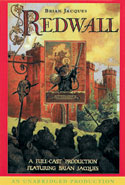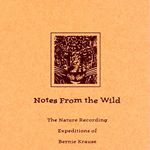Collection Use: Learning: Audio, Video, and the Differentiated Classroom
 Children and young adults come to school with different sets of expectations and experiences. They also come with varied learning styles. While some will be motivated by a video, others will be drawn into an audiobook or music activity. The key is to provide a variety of learning experiences to meet individual differences. This type of dynamic learning environment is known as a differentiated classroom.
Children and young adults come to school with different sets of expectations and experiences. They also come with varied learning styles. While some will be motivated by a video, others will be drawn into an audiobook or music activity. The key is to provide a variety of learning experiences to meet individual differences. This type of dynamic learning environment is known as a differentiated classroom.
Librarians, media specialists, technology coordinators and other teachers all play a vital role in selecting and organizing technology-rich resources as well as designing the learning environment.
 Combining an emphasis on differentiated instruction, promoting multiple intelligences, and ensuring deep understandings, next generation learners combine technologies to meet their individual needs.
Combining an emphasis on differentiated instruction, promoting multiple intelligences, and ensuring deep understandings, next generation learners combine technologies to meet their individual needs.
For example, a "history in verse" lesson might have traditionally included reading a book of poetry and writing a paper. Today's student might read Blues Journey by Walter Dean Myers which contains an audio CD of recorded verse and music. The learner might use the PBS website to read, listen, and watch information about the history of Blues. Rather than a print product, open source software such as Audacity could be used to record their verse and share it on their blog as a podcast.
This page will provide an overview of how to differentiate learning through the use of audio and video. Go to Turning Dreams into Reality: Meeting the Needs of All Children at eduScapes Activiate for more ideas.
Audio and Video Ideas
If you're new to the use of audio and video materials, start with traditional activities and adapt them for a media-rich environment. Let's use writing as an example.
Journal Writing. Rather than a traditional journal, keep a media journal detailing what music is heard and television is watched.
Review Writing. Rather than the traditional book review, try a media review. Watch a movie, listen to an audio recording, or view a television program. Then write a critical review.
Directions Writing. Rather than reading and writing directions, watch a video containing step-by-step instructions for a procedure. Then, write your own instructions for your own video production. Students still get experience writing, but they do it in a different way.
Descriptive Writing. Watch a video and write about the setting of the story like you were writing for a travel book.
Short Story Writing. Write short stories based on the characters in a movie or music video.
Poetry. Watch oral history videos or music videos. Write a poem that reflects the person's experience in the video.
In addition to adapting your traditional activities, consider new ways of thinking about content.
Role of Music. Listen to music that relates to a particular time period. Discuss how it reflects the time. Civil War music, Jazz music, and Rock 'N Rock are three good examples.
Radio News. Rather than just reading the local newspaper, listen to a live radio broadcast or television program from somewhere else in the world. Compare it to local news.
Audiobook. Rather than reading a novel or textbook, listen to an audiobook to gather content.
Think Different
Music can be a great way to incorporate audio into the classroom. Rather than focusing on a particular genre of music, think about the value of the music content. In other words, what is the music saying in terms of sounds and lyrics. How could it help you address a particular learning outcome?
For example, a popular social studies and writing activity is based on Billy Joel's We Didn't Start the Fire. You can also use Kenny G's songs that incorporate audio news clips. Check out an analysis of the song and some links. You can also watch the video.
 When you combine the picture book Take Me Home Country Roads by John Denver (Illustration by Christopher Canyon) with the audio CD you get a new experience. Suddenly the old song becomes a new way of thinking about reunions. What song would you write about a reunion? What would the picture book look like? What genre of music would you use to accompany your reunion story? Why?
When you combine the picture book Take Me Home Country Roads by John Denver (Illustration by Christopher Canyon) with the audio CD you get a new experience. Suddenly the old song becomes a new way of thinking about reunions. What song would you write about a reunion? What would the picture book look like? What genre of music would you use to accompany your reunion story? Why?
Explore a gallery of student work with music at MUSIC.
Use the following links for activity ideas:
- MUSIC (Musicians United for Songs In the Classroom) - check their activities and links
Brainstorm
One of the best ways to find new ideas for your differentiated classroom is through brainstorming. Here are some ideas for applications of sounds in the classroom:
- Hear the voice of a famous person.
- Listen to the cadence of poetry.
- Hear the sounds of animals so they can be recognized in the wild.
- Listen for historical references in music.
- Develop a sense of patriotism through music.
- Study genres of music.
![]() Create a list of some of traditional assignments that focus on verbal/linguistic learning such as reading a book and writing a paragraph. Brainstorm ways you could add audio or visual elements to differentiate the activities for a variety of learning styles.
Create a list of some of traditional assignments that focus on verbal/linguistic learning such as reading a book and writing a paragraph. Brainstorm ways you could add audio or visual elements to differentiate the activities for a variety of learning styles.
Developmental Levels of Students
As you select audio and video materials to integrate into the classroom, consider the developmental level of your students. For example, preschool children do not differentiate between real and make-believe. This has implications for the kinds of video materials you select and the activities you design.
Develop concrete activities for primary children. For example, ask students to sequence screens from a movie, draw a storyboard of a video, or use Kidspiration to review the elements of an audiobook. Ask students to map the setting of the video. As students gain experience using audio and video ask them to discuss the nature of the characters and make predications in the story.
 Intermediate students like video storylines with conflict and clear morals. Use fairytales and fantasy to expand their thinking about the world. For example, you might use the Redwall audiobooks. Incorporate music through the use of musicals and music videos.
Intermediate students like video storylines with conflict and clear morals. Use fairytales and fantasy to expand their thinking about the world. For example, you might use the Redwall audiobooks. Incorporate music through the use of musicals and music videos.
As students become teenagers, they enjoy movies about young adults their age. Look for videos with real-life circumstances and world issues. They also enjoy videos with fantasy and science fiction related to today's issues. Music becomes increasingly important to many students. This is a great age to examine the lyrics in popular or historical songs.
Multiple Approaches
 Try a variety of methods and resources for experiencing subject matter. For example, rather than a scientific approach to nature, explore nature through sound recordings. Bernie Krause's "expedition" contains a book and audio CD.
Try a variety of methods and resources for experiencing subject matter. For example, rather than a scientific approach to nature, explore nature through sound recordings. Bernie Krause's "expedition" contains a book and audio CD.
Rather than reading about mental illness, start with a video that might generate questions about the topic. This will then motivate students to read the textbooks, trade book, or website materials.
Not all students are hooked by the same approach, audio and video can be a great way to provide different paths to the same learning outcomes.
![]() Use a movie, music (song, CD, or style), speech, poem (audio), or other media material as the focal point for a unit or promotional activity. Examples: Gladstone (Native American Music), Jazz, Music from Civil War, Folk Music, Billy Joel’s song.
Use a movie, music (song, CD, or style), speech, poem (audio), or other media material as the focal point for a unit or promotional activity. Examples: Gladstone (Native American Music), Jazz, Music from Civil War, Folk Music, Billy Joel’s song.